Craftsmanship at Its Finest: The Art of Making Leather Circle Bags
Posted by Annie Jewel on
In a world of mass-produced goods, there's something undeniably special about owning an artisanal product crafted with care and dedication. Leather circle bags, with their timeless elegance and unique design, are no exception. Behind each beautifully crafted leather circle bag lies an art form that has been perfected over centuries. In this blog, we will take a journey into the world of craftsmanship, exploring the art of making leather circle bags and the skilled hands that bring them to life.
1. The Origins of Leather Circle Bags (Click the picture)

Leatherworking has a long and storied history, dating back to ancient civilizations. The practice of creating leather goods, including circle bags, has been passed down from generation to generation, with each artisan adding their own touch of creativity and expertise.
2. Selecting the Finest Leather
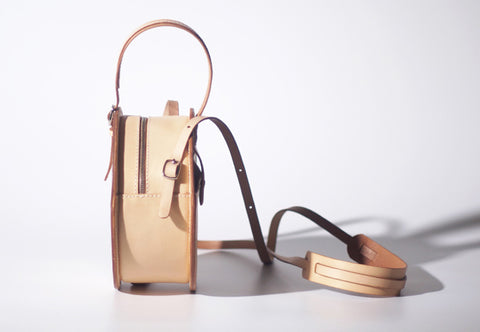
The first step in creating a top-quality leather circle bag is selecting the finest leather. Skilled artisans meticulously inspect hides, looking for specific characteristics such as texture, grain pattern, and overall quality. The type of leather used greatly influences the bag's durability, appearance, and feel.
3. Pattern Making and Cutting

Before a single stitch is made, the artisan carefully designs and creates a pattern for the leather circle bag. Precision is paramount, as any error could compromise the final product. Once the pattern is complete, the cutting process begins, requiring a steady hand and years of experience to ensure clean and accurate cuts.
4. Hand-Stitching Techniques
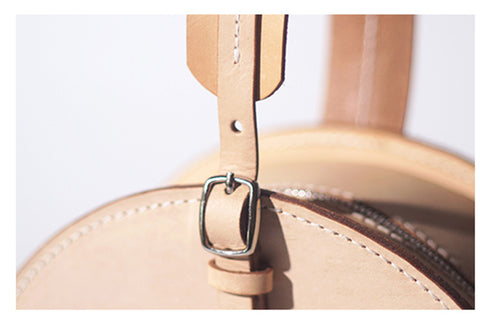
Hand-stitching is a hallmark of true craftsmanship in leatherworking. Using traditional tools like needles, awls, and waxed threads, the artisan meticulously sews each piece together, ensuring the bag's strength and longevity. This labor-intensive process requires patience and skill, resulting in a beautifully detailed and robust product.
5. Creating the Perfect Shape
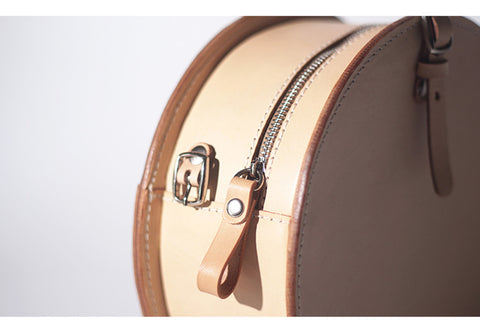
Shaping a leather circle bag requires a delicate touch and an understanding of the material's behavior. Artisans often employ techniques such as molding, pressing, and edge-finishing to achieve the desired form. The circle bag's unique shape adds to its appeal, making it a standout accessory.
6. Adding Personalized Touches
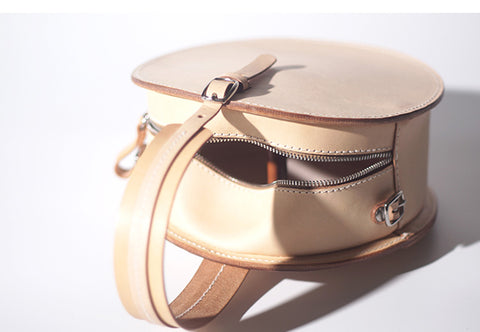
Customization is an essential aspect of artisanal leatherworking. Many skilled craftsmen offer personalized touches, such as monogramming, embossing, or unique hardware, allowing customers to make their circle bags truly one-of-a-kind.
7. Finishing and Polishing
Once the bag has taken shape, the artisan devotes time to finish and polish the leather. This step involves applying various treatments, including conditioning oils, waxes, and dyes, to enhance the bag's appearance and protect it from the elements.
8. Quality Assurance
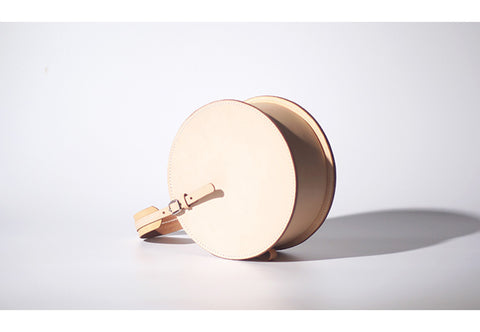
A reputable leather artisan takes pride in their work and ensures that each bag meets strict quality standards. Rigorous quality assurance checks are conducted to verify that the finished product aligns with the artisan's vision and the customer's expectations.
Owning a leather circle bag that has been crafted with utmost care and attention to detail is a true luxury in today's fast-paced world. The art of making leather circle bags is a labor of love, blending traditional techniques with contemporary design to create timeless pieces that stand the test of time. By supporting the skilled artisans behind these creations, we not only invest in high-quality products but also preserve an ancient craft for future generations to appreciate and admire. So, the next time you carry your leather circle bag, take a moment to appreciate the artistry and craftsmanship that went into its creation.
